Pickering Castle
OS grid reference:-
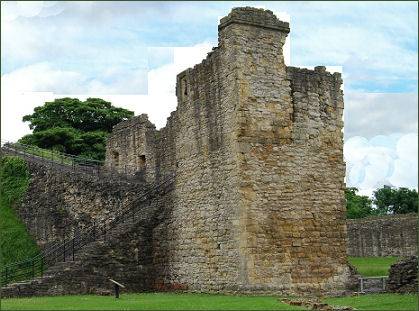
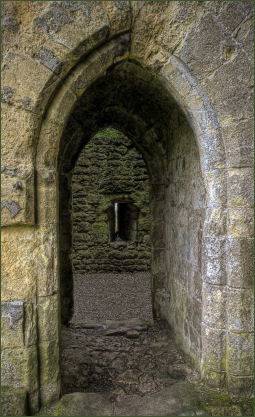 Pickering Castle is situated in the attractive market town of Pickering, just to the south of the North York Moors National Park. The castle was originally built as a timber earth motte and bailey structure by William the Conqueror during the suppression of the north of England.
Pickering Castle is situated in the attractive market town of Pickering, just to the south of the North York Moors National Park. The castle was originally built as a timber earth motte and bailey structure by William the Conqueror during the suppression of the north of England.
The Norman timber castle was replaced in stone in the twelfth century. The present inner ward was built during the reign of the first Plantagenet king, Henry II between the years 1180 and 1187.
The stone shell keep dates from 1216 and 1236, as does the chapel. Between 1323 and 1326 an outer ward and curtain wall was constructed along with three towers. A gatehouse, hall and storehouses followed.
The Coleman Tower, constructed by King Henry II, is the entrance to the castle and protects the inner bailey, which contains the chapel and main hall which was used for feasting and as a court room. The outer bailey was protected by a stone curtain wall with four towers, much of which remain standing to their full height.
Pickering Castle was used by a succession of medieval Kings as a hunting lodge who used the adjacent forest for hunting deer and wild boar.
In 1267, King Henry III granted the castle to his younger son, Edmund Crouchback, Earl of Lancaster. On Edmund's death in 1296 the castle was inherited by his eldest son, Thomas, Earl of Lancaster.
Thomas of Lancaster challenged the weak rule of his cousin King Edward II and brought about the death of Edward's favourite Piers Gaveston on 19 June, 1312. Edward, distraught, had little choice but to accept the situation.
In 1321 Lancaster led a rebellion against the king. Edward cut off the army of his allies, the marcher lords and forced their surrender at Shrewsbury. He then led his troops to oppose Thomas of Lancaster who was forced to fall back from Burton-on-Trent to his castle at Pontefract. Deserted by his troops he was defeated at the Battle of Boroughbridge, and surrendered to the king. he was imprisoned at Pontefract Castle and executed there in March 1322. The estates of the Earldom of Lancaster, along with Pickering Castle, were then seized by the Crown.
The Castle was restored to the House of Lancaster when Henry, Thomas' younger brother, regained the title. Henry's son, another Henry, who was created Duke of Lancaster by King Edward III, left only two daughters, Maud born 4 April 1339 and Blanche, born on 25 March 1345. Maud was married to William I, Duke of Bavaria, but died, without children, soon after her marriage, her portion of the inheritance passed to her sister Blanche, who married Edward III's third son John of Gaunt, whereby Gaunt inherited Lancaster's estates and titles.
Henry of Bolingbroke, the son of John of Gaunt and Blanche of Lancaster, usurped the throne from his cousin Richard II and granted the Duchy of Lancaster to his son, Henry of Monmouth, Prince of Wales. When he succeeded to the throne as King Henry V in 1413 the Duchy was again merged with the Crown.
By the seventeenth century Pickering Castle was in a ruinous state, since 1926 it has been in the care of the Office of Works.
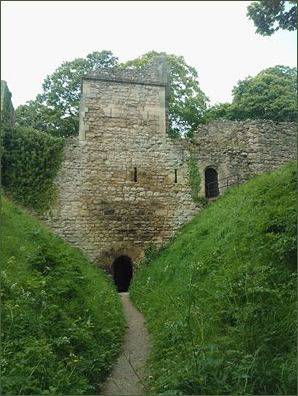
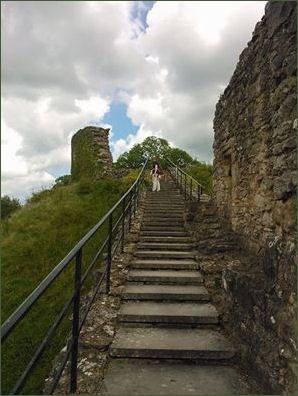
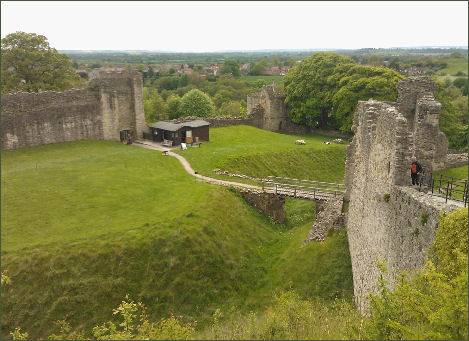
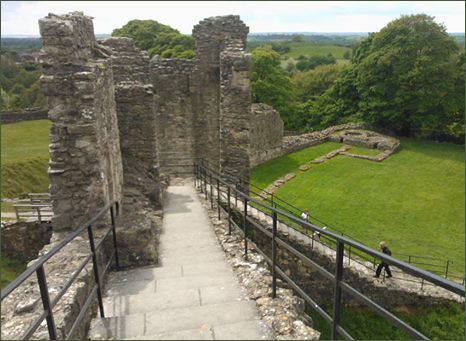
Images courtesy of Paul Johnson
Directions
In Pickering; 15 miles SW of Scarborough
Sat Nav - Postcode: YO18 7AX Latitude: 54.248286 Longitude: -0.774769
Parking - 75m from entrance; loose gravel surface. Some parking spaces for disabled visitors nearer the entrance.
